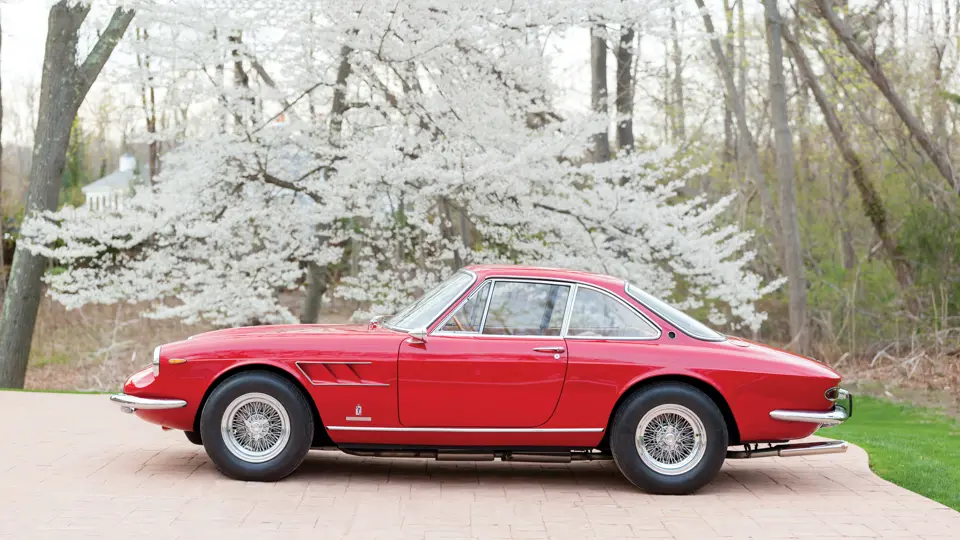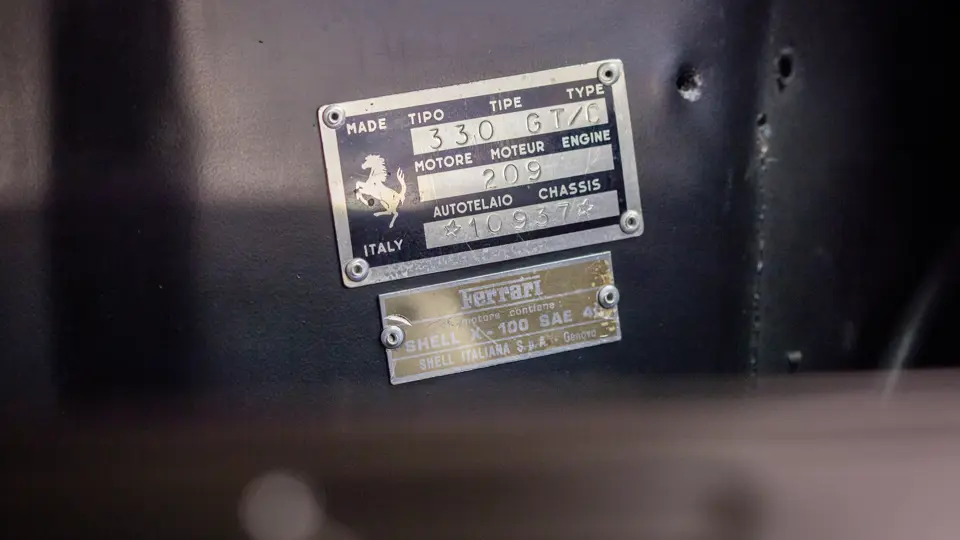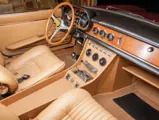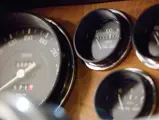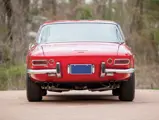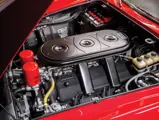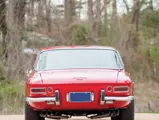300 bhp, 3,967 cc SOHC V-12 engine, three Weber 40 DCZ/6 twin-choke downdraft carburetors, five-speed manual rear transaxle, four-wheel independent suspension, and four-wheel disc brakes. Wheelbase: 94.5 in.
In late 1964, an unusual gap developed in Ferrari’s luxury model line, as the last of the 250 GT Lusso examples were completed. With only the über-exclusive 500 Superfast in production, Maranello lacked a civilized mid-range grand tourer that had no designs on racing. Passionate devotees of the Lusso were duly rewarded in March 1966, when Ferrari used the Geneva Salon to introduce the 330 GTC, a new luxury grand touring coupe that successfully integrated aspects of several other models in the Maranello stable.
Aesthetically, the 330 GTC’s body combined the front end of the 400 Superamerica with the tapered tail of the 275 GTS Convertible. These features bookended a brand-new canopy design that had generous glass sections and slender A-pillars, imbuing sophistication. Mechanically, despite being defined as a luxurious road car, the GTC was engineered with substantial gravitas and rode on the same chassis as the race-ready 275 GTB Berlinetta.
Into this proven chassis, Ferrari dropped the enlarged four-liter Colombo V-12 that had recently been introduced in the 330 GT 2+2. Unlike the 2+2 though, the GTC employed a rear transaxle, which gave the model a sporting character becoming of its exquisite shape, and luxurious interior appointments, including standard power windows and leather upholstery.
By the time the model was supplanted in 1968, the 330 GTC had been produced in a modest quantity of just 598 examples. Along with being increasingly prized in recent years for its handsome Pininfarina design and stout mechanicals, the GTC has come to be regarded as the last of the great vintage Ferrari grand touring coupes.
According to Ferrari factory records, this beautiful mid-production 330 GTC was sent to Pininfarina for bodywork on August 29, 1967. The coachbuilder finished the elegant exterior in Bianco paint and trimmed the interior in Rosso. The car’s engine was assembled on November 3, under the supervision of foreman Amos Franchini, who oversaw the completion of the car on November 24. A Certificate of Origin was issued on March 15, 1968, and later that month, the car was delivered to dealer S.a.S. di Carla Allegretti e C. in Bologna, where it was registered with tags reading BO 337265.
On April 23, chassis number 10937 was purchased by its first owner, Gian Pietro Segafredo. Mr. Segafredo returned the car, with the odometer showing just under 11,000 kilometers, to the factory’s Assistenza Clienti in Modena during the month of July, and this service may have indicated his intention to sell the car, as a transaction was completed in October. The GTC was then acquired by Giuseppe Pitorri, of Rome, and re-registered as Roma D 48152.
In September 1969, Mr. Pitorri sold the Ferrari to Annita Panella, of Rome, who in turn resold the car eight months later to Giuseppina Figini, of Milan. On May 6, 1971, the car was purchased by Milan resident Italo Matti, but his registration was cancelled roughly a year later, a likely indication that the car was then exported to the United States.
By 1988, it was offered for sale by Walter Giovanelli in Brentwood, New York. The car, wearing a livery of silver paint, was in the starting phases of a gradual restoration that would take 10 years to complete. Over the following decade, the brakes, suspension, and drivetrain were all carefully rebuilt to factory standards. The radiator was replaced, all of the brightwork was re-chromed, and new Michelin tires were mounted on restored Borrani wire wheels. Mr. Giovanelli relocated to Pompano Beach, Florida, in 1992, and the car remained with him there during the course of its restoration and into the late 1990s.
In October 2000, the 330 GTC was sold to Dr. Michael Bronson, of New York, New York, who kept the car for almost two years before offering it at the New York Auto Salon held at the Waldorf Astoria in September 2002. After being acquired by the consignor, the 330 GTC was entrusted to well-known Ferrari mechanics at Marcovicci-Wenz Engineering in 2004. They in turn overhauled the engine to ensure its flawless operation. In 2006, the car was sent to the highly regarded Motion Products in Neenah, Wisconsin, for a bare-metal repaint in the proper color of Rosso Corsa. It was also fitted with a fresh tan leather interior by Kies Upholstery, and all of the trim pieces were re-chromed, as necessary. Receipts and invoices documenting the restoration are included on file with the car.
Furthermore, in the summer of 2013, Motion Products overhauled the GTC’s suspension by rebuilding all four shock absorbers and repairing the transaxle mount. Finally, they serviced the air conditioning to ensure comfortable warm-weather touring. The car is currently accompanied by a complete set of manuals and tools, and most importantly, it has obtained prestigious Ferrari Classiche certification, which authenticates this 330 as a matching-numbers example that retains its original V-12 engine and transaxle.
This GTC has been regularly driven and maintained, and it is still capable of the smooth and sporty road performance that made the 330 so popular in period. It would surely be welcomed at FCA events and Italian car shows, where its classic good looks and elegant proportions will doubtlessly draw the favor of knowledgeable tifosi.
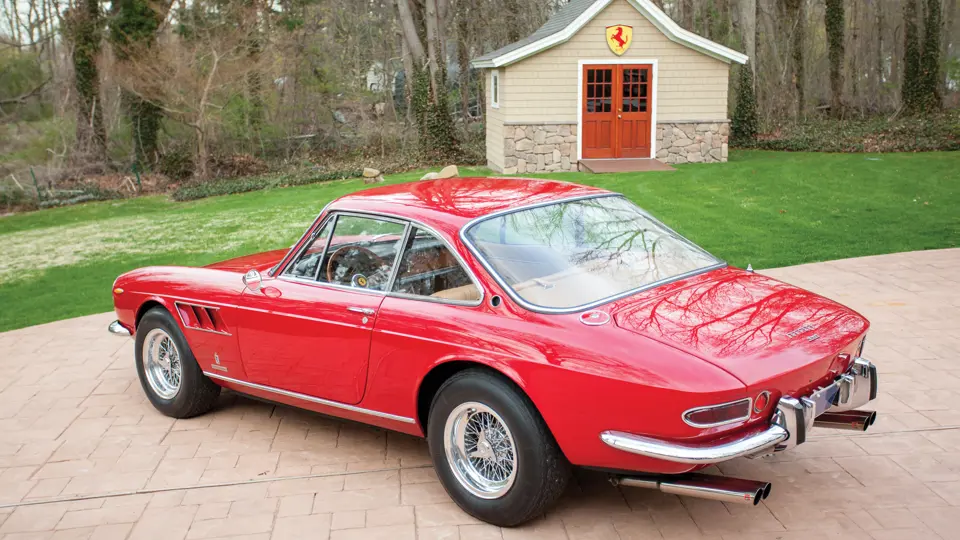



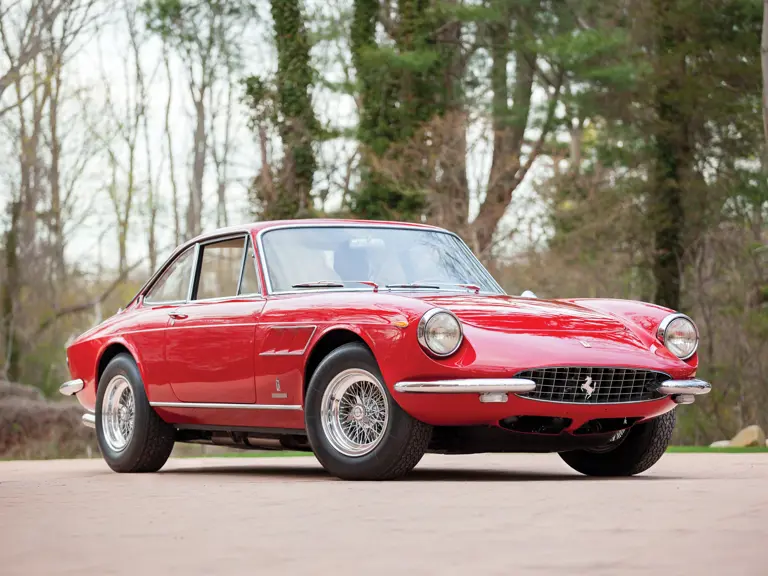
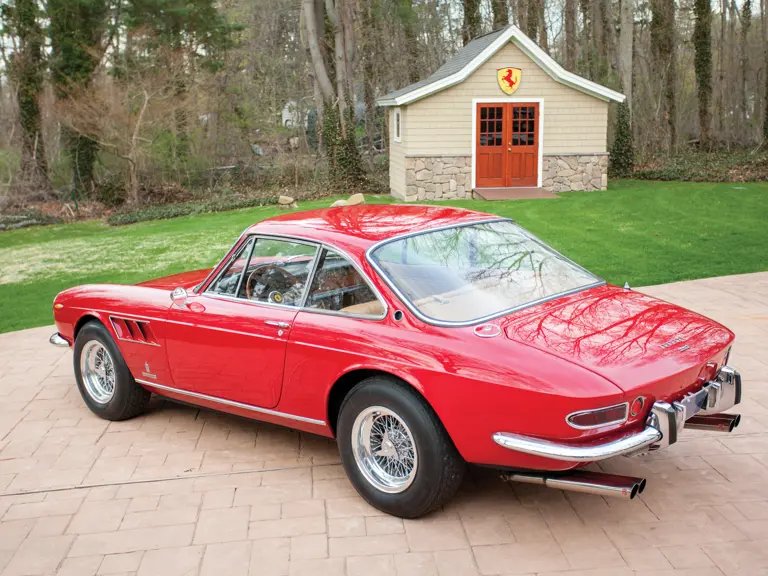
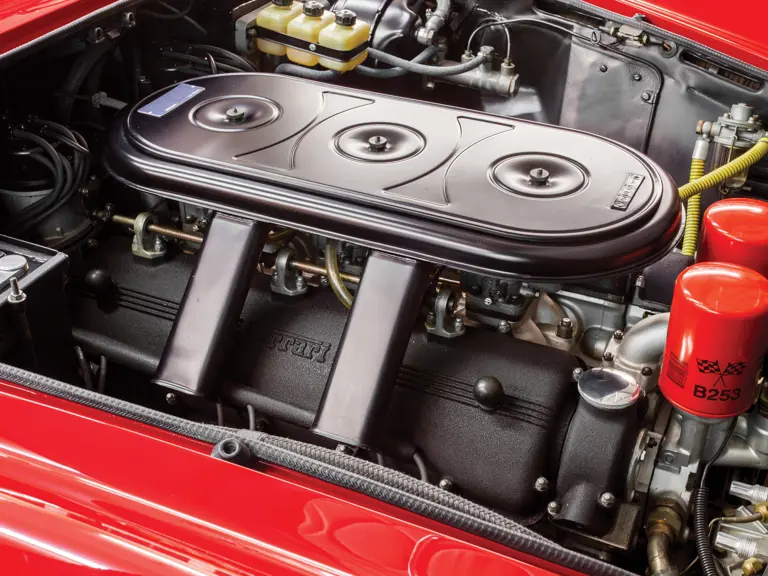
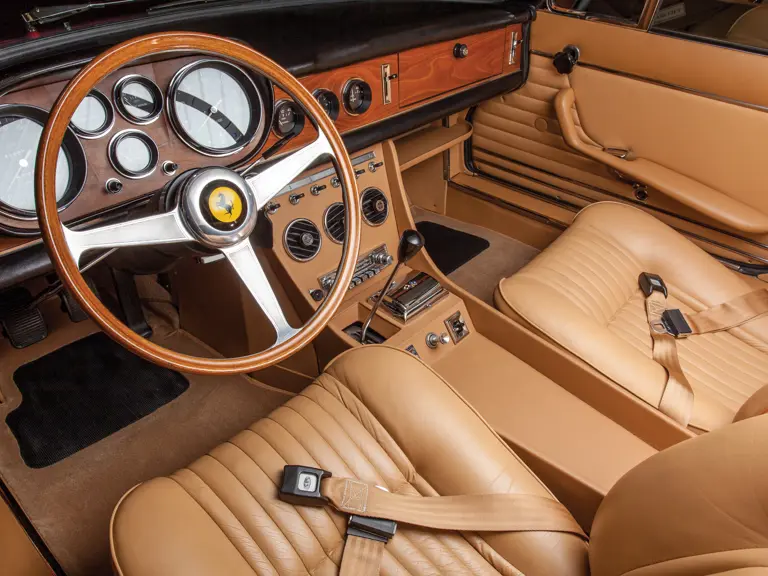

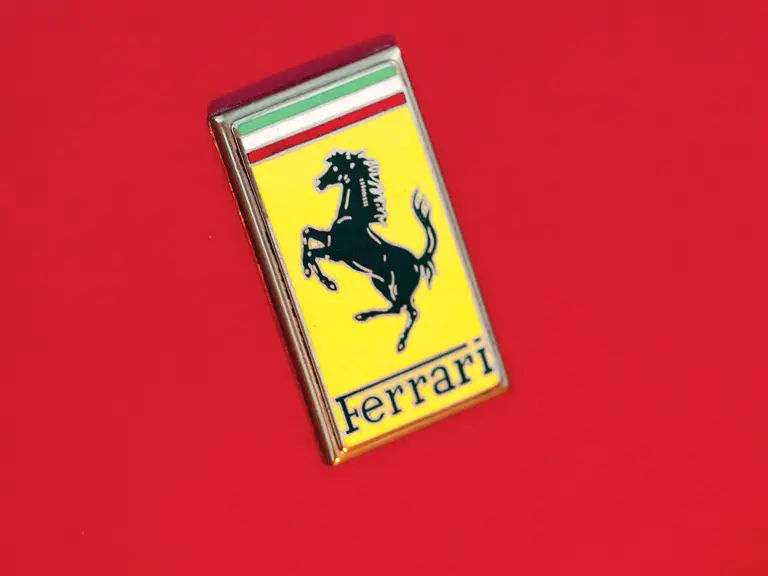
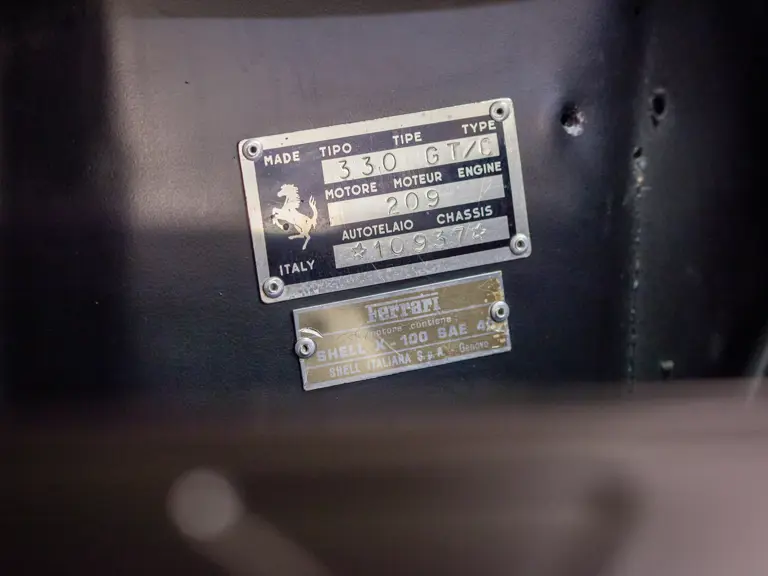

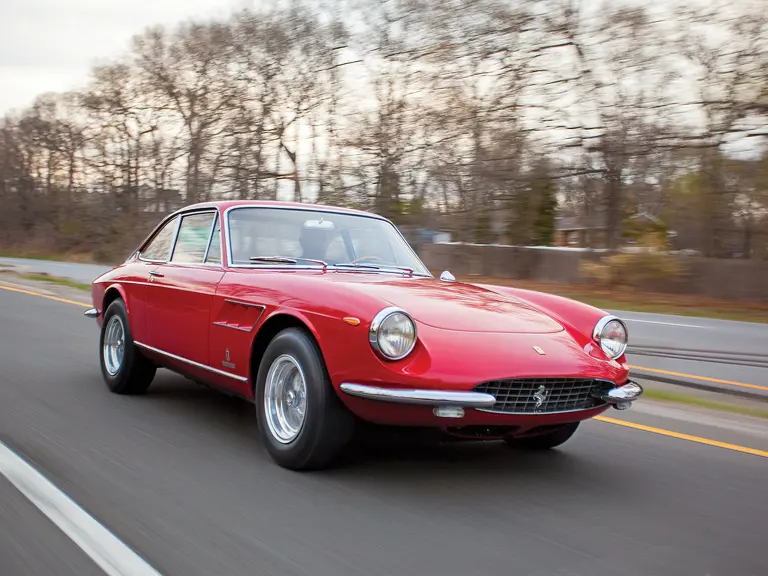

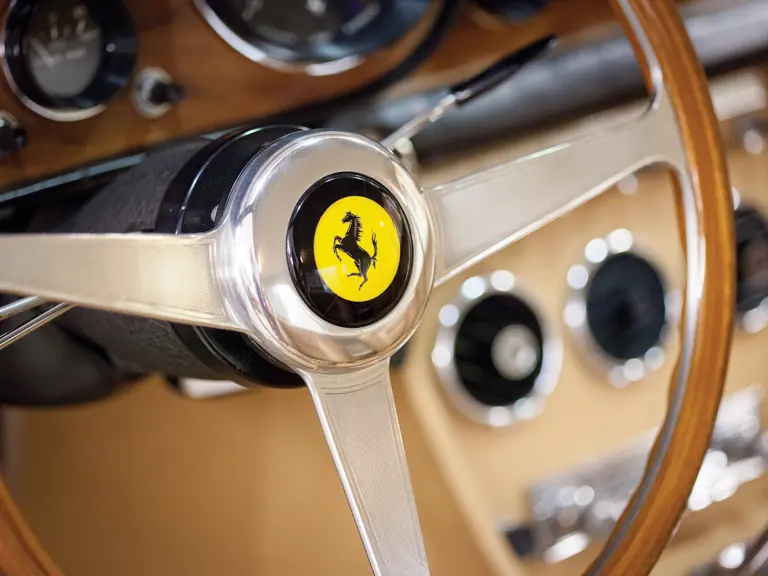
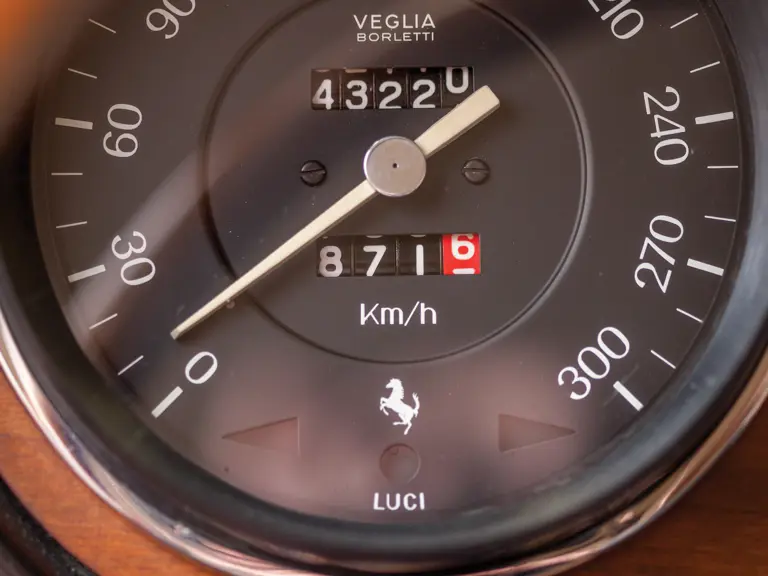

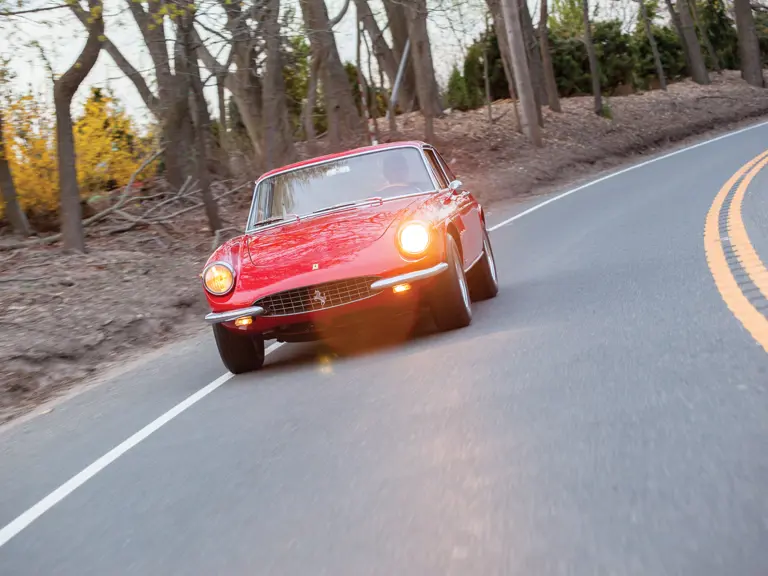
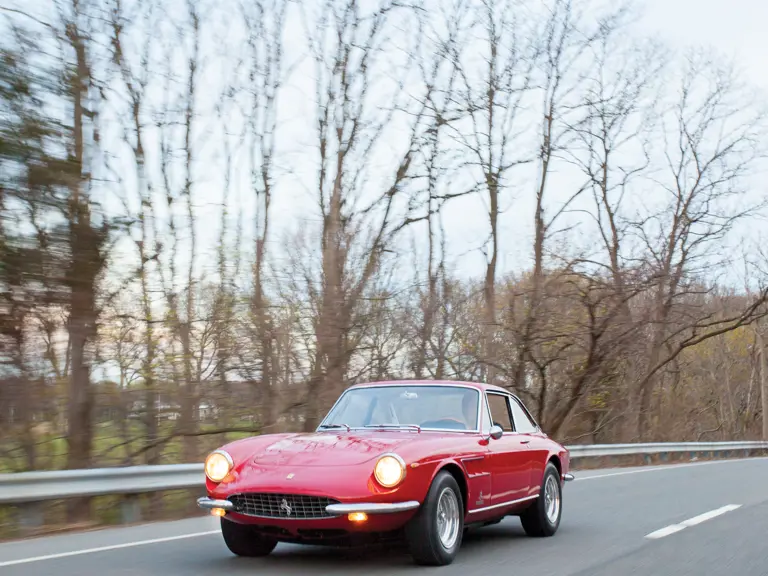
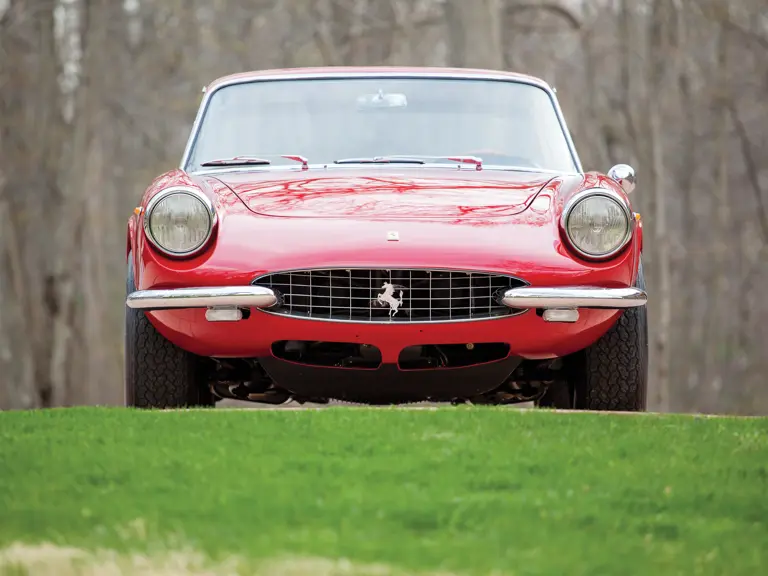
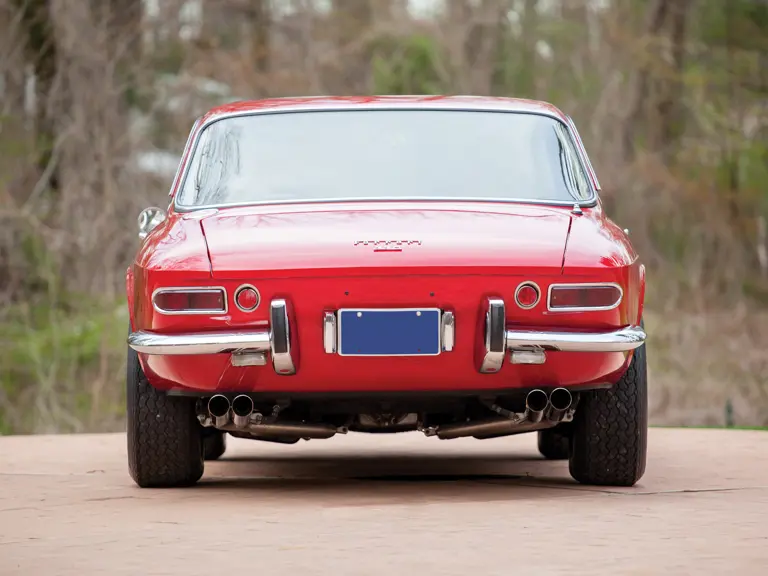
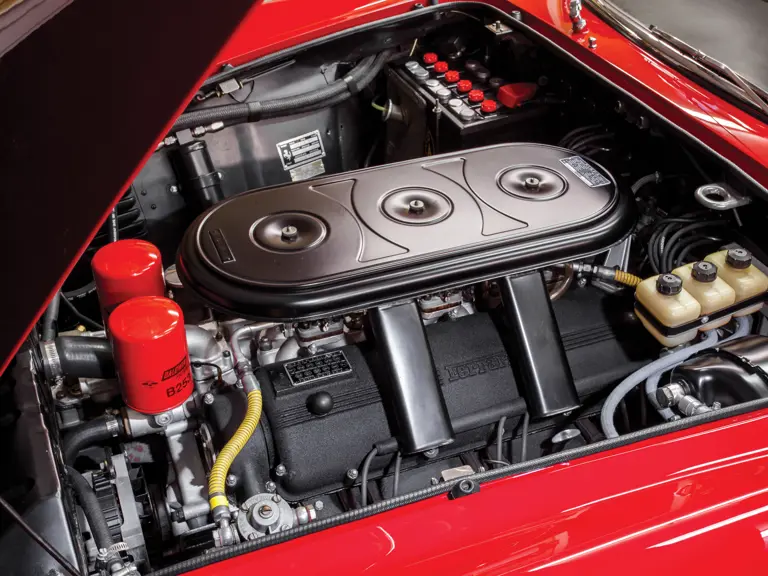

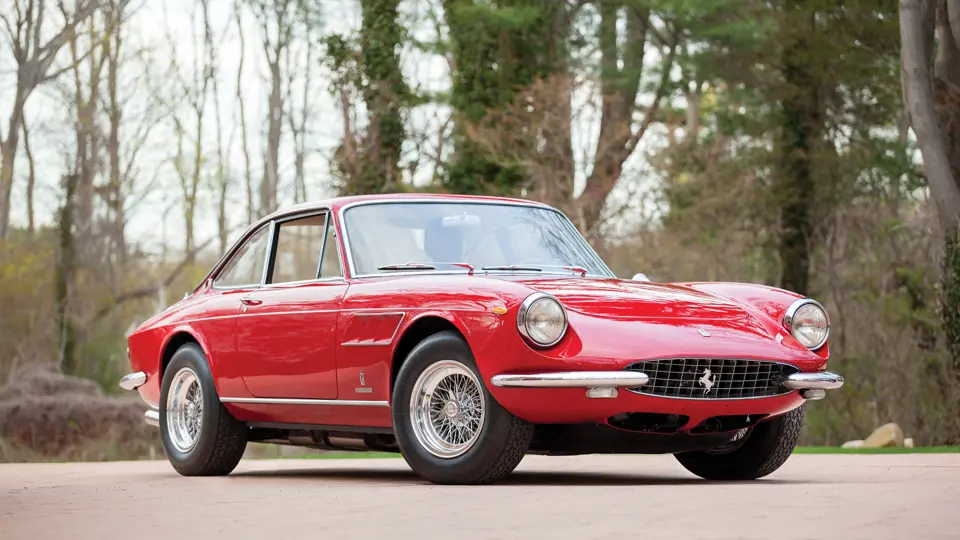
 | Monterey, California
| Monterey, California
